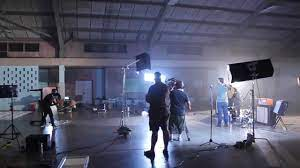Final task: production blog
Editing our high school film is a crucial stage in the filmmaking process.
The editing process allows us to piece together all the footage we've captured.
It's where we bring our story to life and convey our creative vision.
Each shot and scene must be carefully selected and arranged to maintain coherence.
Editing involves trimming unnecessary footage to maintain pacing and flow.
We must ensure continuity between shots to keep the audience engaged.
Sound design plays a significant role in enhancing the overall viewing experience.
Music, sound effects, and dialogue must be synchronized and balanced effectively.
Color grading helps establish the mood and atmosphere of our film.
It allows us to enhance or alter the colors to evoke specific emotions.
Transitions between scenes should be seamless to avoid disrupting the narrative.
We must pay attention to pacing to keep the audience engaged from start to finish.
Editing also involves adding titles, credits, and any necessary visual effects.
It's important to maintain consistency in style throughout the film.
Collaboration among the editing team is essential to ensure a cohesive final product.
Feedback from peers and mentors can provide valuable insights for improvement.
We must remain open to making changes based on constructive criticism.
The editing process requires patience, attention to detail, and creativity.
Ultimately, our goal is to deliver a polished and compelling short film.
Editing is where we refine our raw footage into a captivating cinematic experience.




Comments
Post a Comment